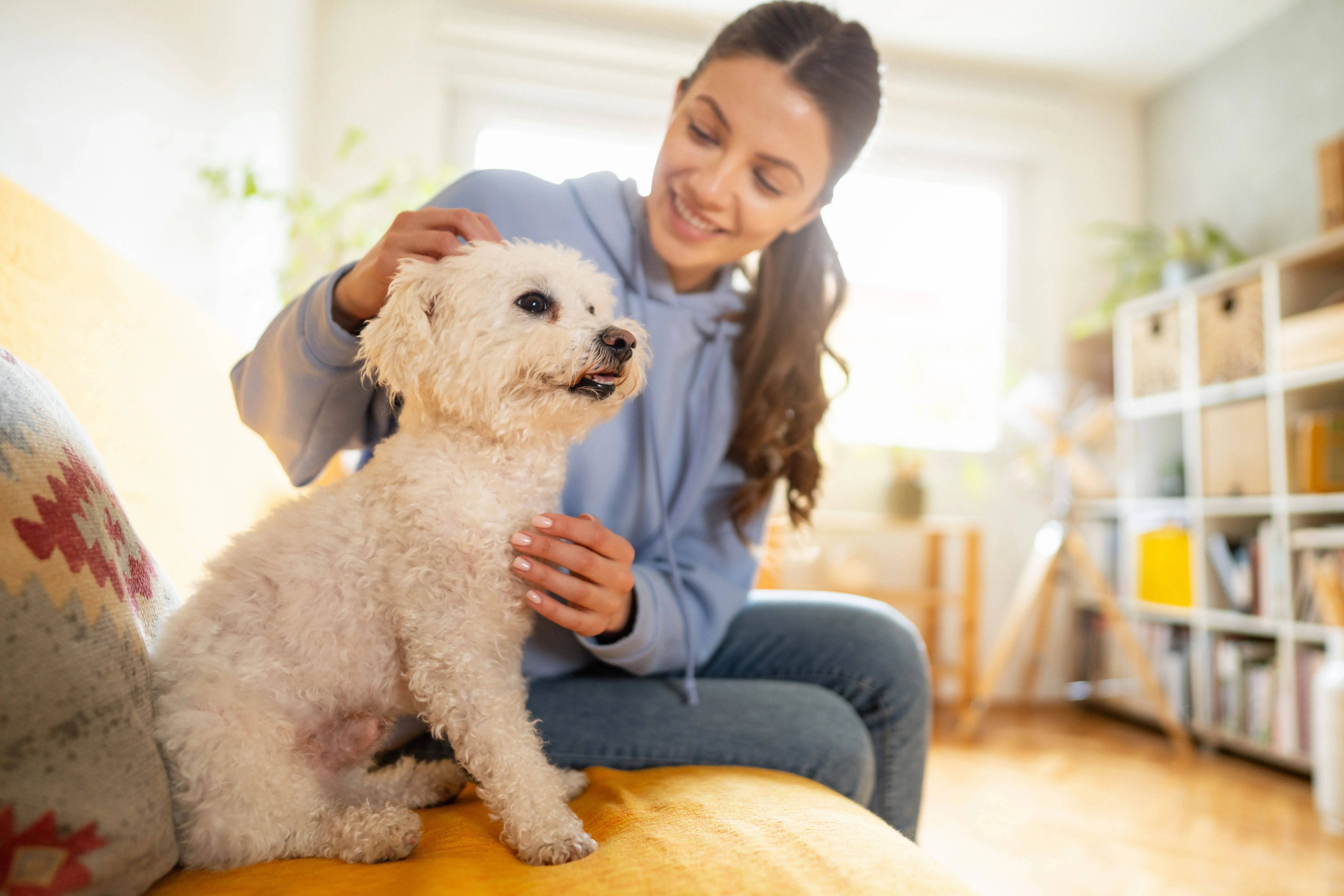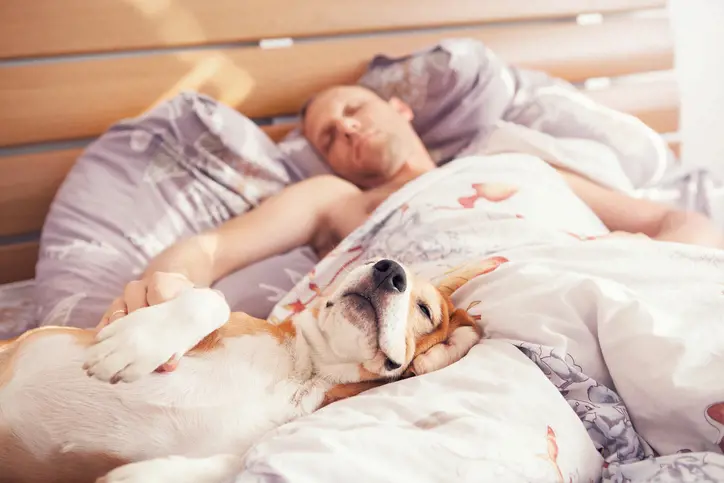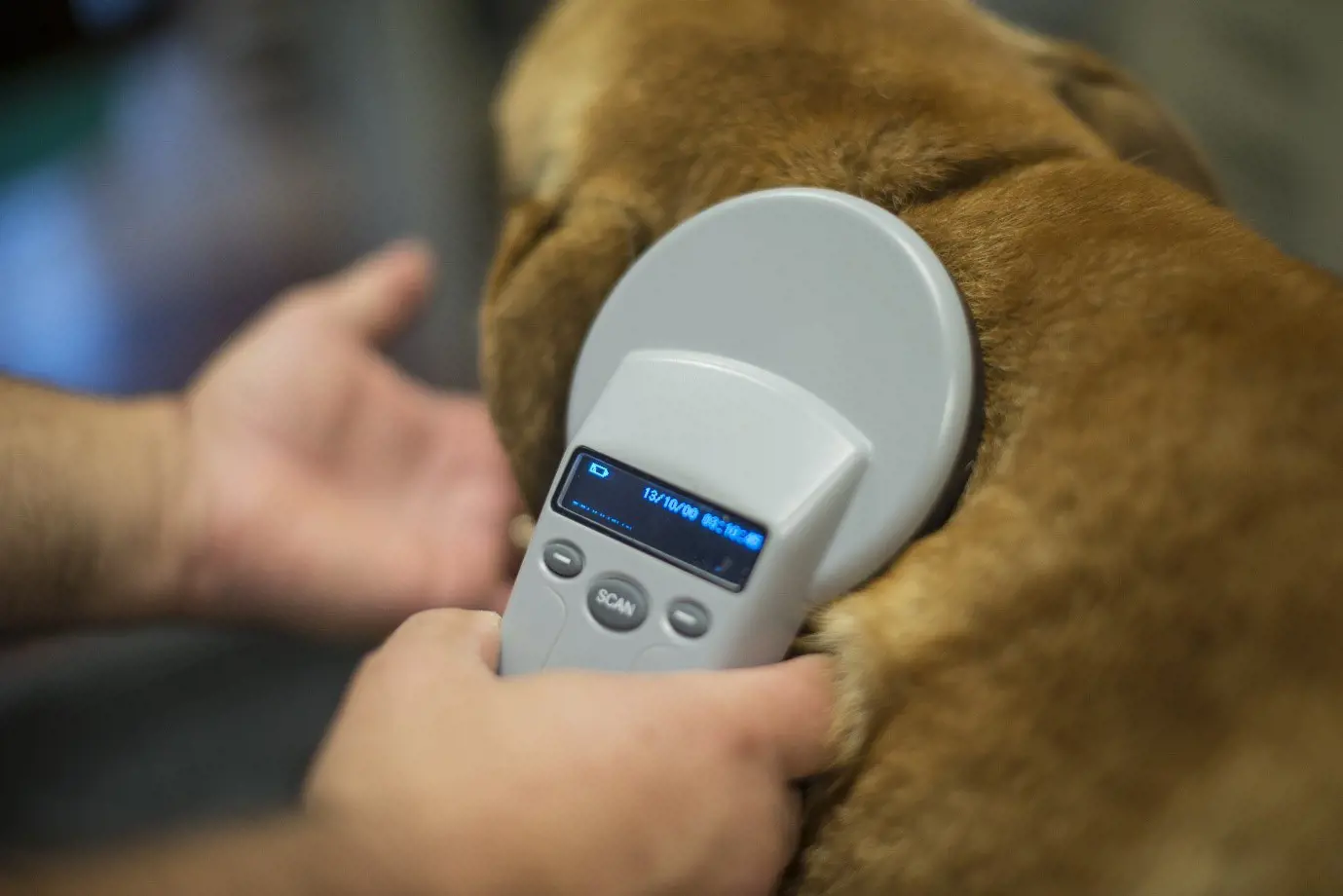How to keep your dog safe around livestock
28th April, 2021
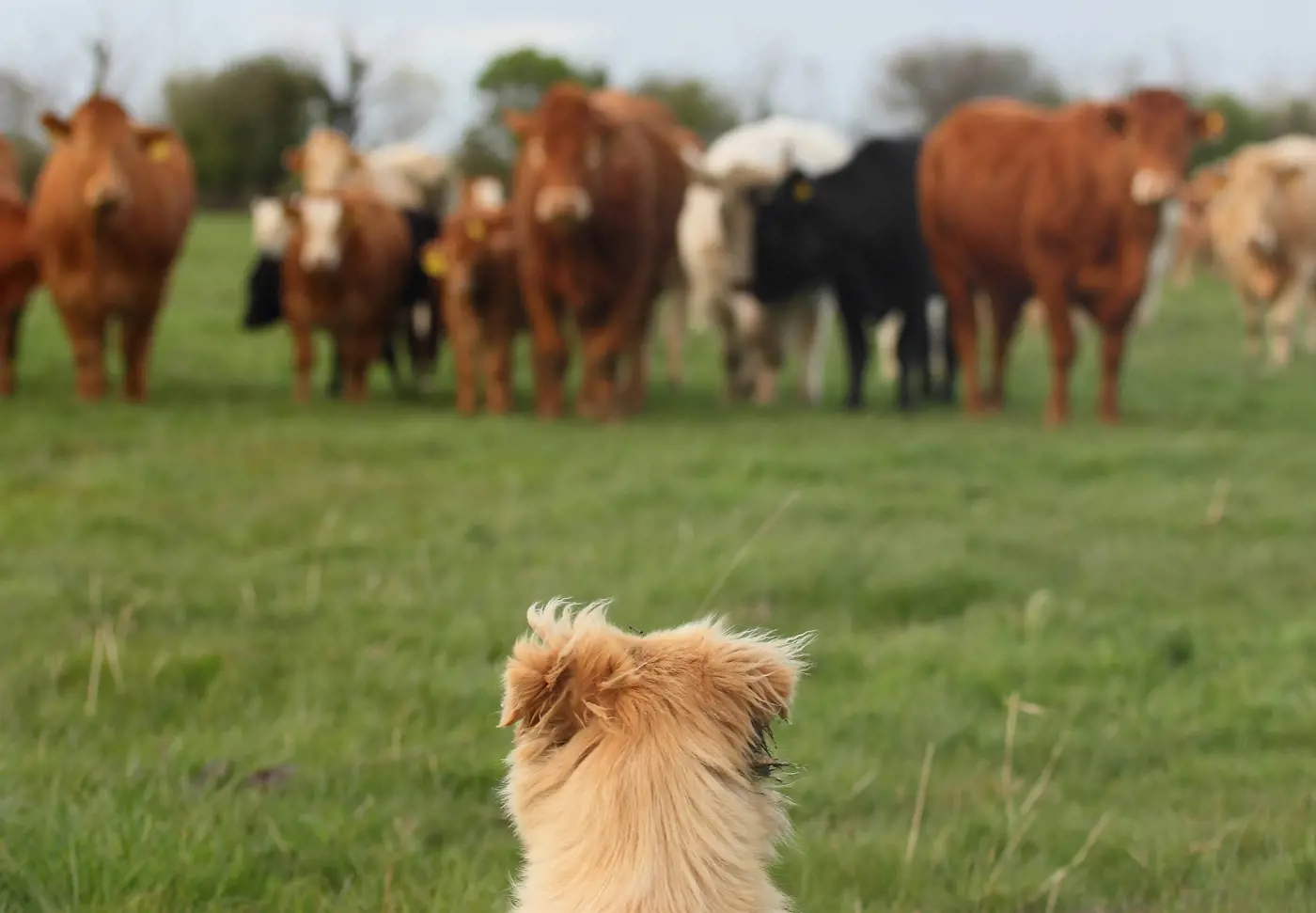
Many dog owners love nothing more than getting out into the countryside and taking their favourite four-legged friend for a long walk. However, even this enjoyable activity can put you and your dog at risk.
And we aren’t just talking about common causes of injury and illness, such as poisonous plants and discarded barbed wire. There are other hazards in those fields and lanes, too.
Before setting out on any walk you’ll have arranged suitable insurance for dogs. But are you aware of the risks presented by livestock in the fields and lanes through which you might walk? And no matter how well-behaved your pooch is, the risks they might present to the livestock?
Understanding how to keep your dog safe near cattle and sheep will not only protect you and your pup but will also mean farmers are more likely to keep their fields dog-friendly! Read our ‘How to’ guide and make your countryside walks as safe and stress-free as possible.
Having the right dog insurance in place is the number one way to ensure your dog can get the help they need whatever the adventure.
Give the team of insurance specialists at Purely Pets a call. Checking your dog has the best cover in place will ensure your walk through the beautiful British countryside goes without a hitch!
Walking with your dog in the countryside
All responsible dog owners need to know about the various laws when out walking near livestock. If you don’t then you could be at risk of prosecution.
There is an extensive Rights of Way network throughout England and Wales, providing many thousands of miles of paths and tracks for you to walk on with your dog.
These paths are usually clearly indicated on maps and by signposts at the roadside and coloured arrows along the path. They could be a footpath, bridleway, restricted byway or a byway open to all traffic.
It’s worth mentioning that depending on the type of path, dog walkers might need to share access with horse riders and cyclists. So, it’s always best to put your dog on the lead when you encounter other path users to reduce the risk of accidents.
While you have a legal right to walk here you have to take steps to prevent harm to wildlife, livestock and the natural environment.
These are set out in the Countryside Code found on the UK government’s website. For visitors to Scotland, you need to follow the Scottish Outdoor Access Code.
If you are exploring any new area, make sure your pet is covered by dog insurance in case they run off and get lost. Insurance can cover the costs of advertising and rewards for lost pets.
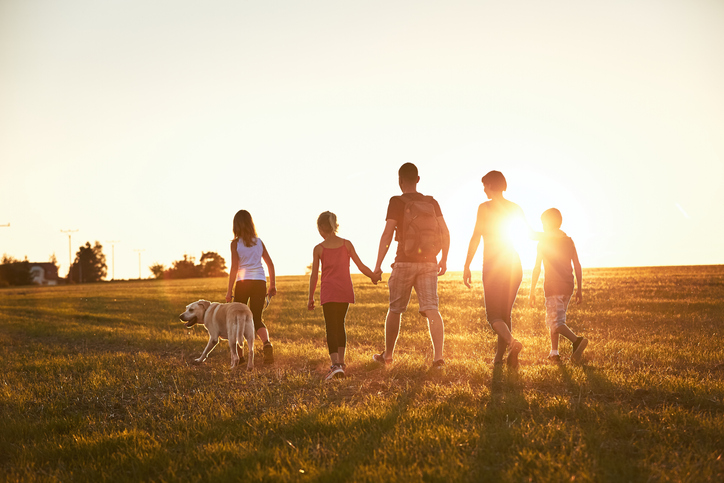
Risks to your dog and livestock
Despite their loveable appearance our pet dogs are all descended from wild predatory ancestors.
Thousands of years ago these early dogs would have chased and hunted the ancestors of today’s livestock animals. While these natural instincts are not as obvious nowadays, they can still reappear with tragic consequences.
Even if your dog is only wanting to play or being inquisitive, chasing livestock can easily cause distress, injury and even death. Common farm animals such as sheep, cows, pigs, goats, chickens and many others are easily worried by perceived threats such as dogs.
According to farmers dog attacks on farm animals cost the industry an estimated £1.3m a year. Not to mention the emotional distress of discovering badly injured and dead animals.
Indeed, such is the danger farmers can legally shoot a dog that is worrying their livestock. There have been many such tragic cases reported in recent years in both England and Wales and Scotland.
Even if your dog doesn’t catch or bite the livestock, they can still cause harm, particularly to pregnant or young animals. Check out our recent blog that explains how long a dog is pregnant for.
When livestock are panicked, they may:
-
Get injured when running away from danger.
-
Bunch themselves together tightly in a group. This has been known to cause injury and fatalities to young or more frail animals.
-
Miscarry their unborn young due to stress.
They may also injure your dog when trying to defend themselves and their young, or accidentally trample your animal when trying to get away.
And it’s not just the farm animals or your dog that could end up in difficulty. If your dog worries livestock then the person in charge of the dog is guilty of an offence.
You could find yourself with a fine of up to £1,000 as well as paying compensation and costs if your dog is caught off lead worrying livestock.
So, avoid these problems by keeping your dog on a lead whenever you are near cows, sheep, horses and other livestock.
What to do before heading out
Before setting off for a country walk with your dog, the Blue Cross animal charity makes some useful suggestions.
-
Be aware that your dog might behave differently in a rural environment. No matter how well behaved your dog is at home, out in the countryside their chase instinct can easily become stimulated and they forget your careful training.
-
Plan ahead. To help prepare yourself for any potential changes in behaviour it’s important to plan ahead. Perhaps take some healthy treats with you and work on improving the response to commands. When animals are around it’s important that you can quickly get your dog under control to prevent danger. If your dog’s recall isn’t the best then the National Animal Welfare Trust (NAWT) has a free advice sheet on training tips you can use.
-
Start young. The earlier you get your canine used to livestock the better for everyone. Start off by exposing your dog to livestock from a distance and rewarding them for calm and relaxed behaviour.
-
Follow the Countryside Code. It’s been 70 years since the Countryside Code was first launched in England and Wales. The Code allows everyone to enjoy the benefits of getting out in the countryside, while also giving them useful pointers on respect for the environment and other countryside users.
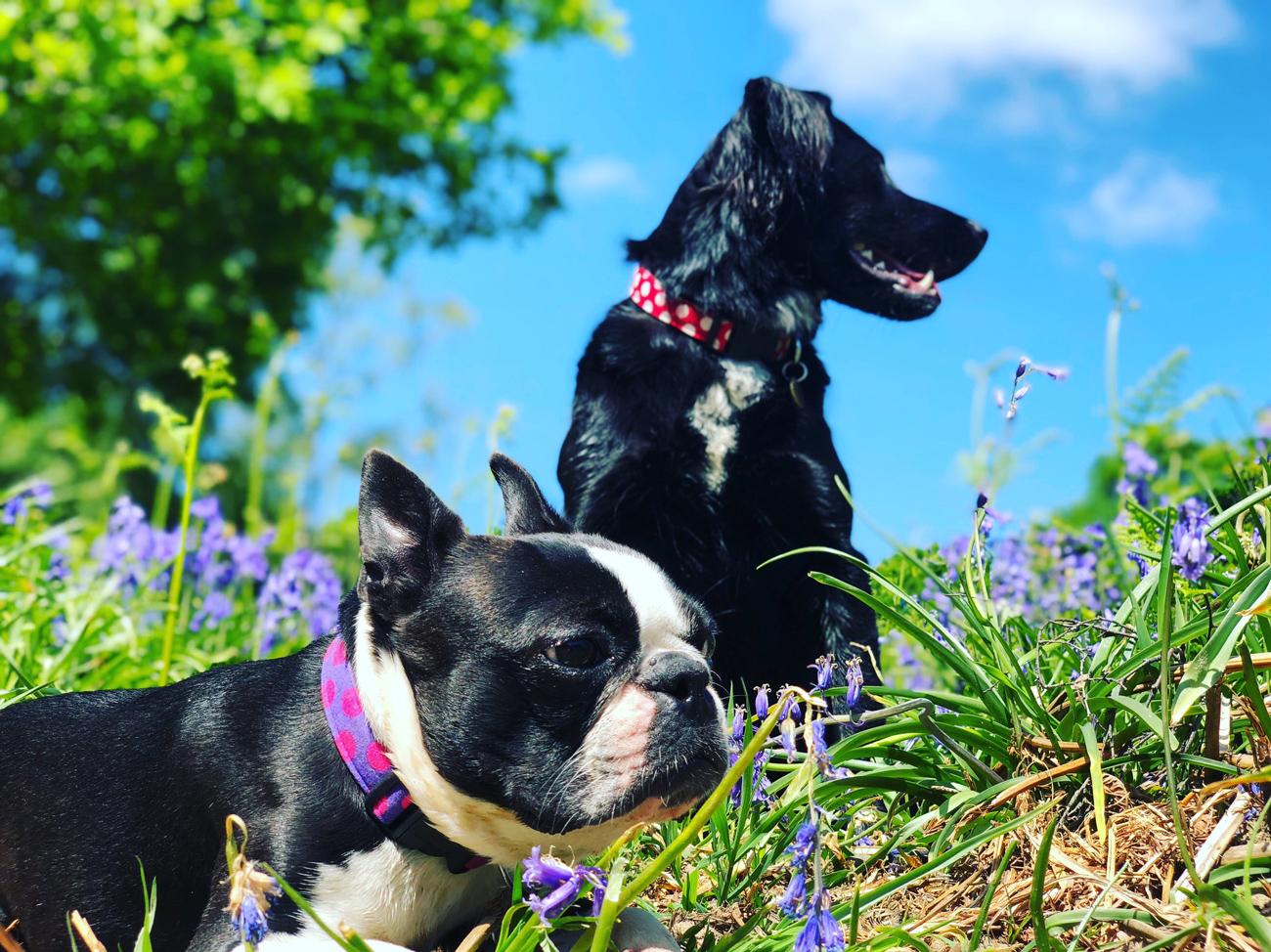
Following the Countryside Code when walking your dog
Whenever you are out in the countryside, you’ll need to follow the Code but there are two important rules to keep in mind.
Always keep dogs under control and in sight
Our extensive areas of countryside, parks and coastline are perfect places to take yourself and your dog for a good dose of exercise. However, you must always consider other users and wildlife.
This means keeping your dog under effective control. To do this you should always keep your dog on a lead or in sight and be confident your dog will return on command. You also need to make sure your dog doesn’t stray from the area where you have right of access.
Always check local signs for information as to when you must keep your dog on a lead for all or part of the year. However, it’s always good practice wherever you are to keep your dog on a lead around livestock.
Dog poo – bag it and bin it
Dog poo is not only unpleasant for other countryside users but it can also cause serious illness in people, livestock and wildlife. So, always clean up after your dog and dispose of the mess responsibly.
Leaving bags of dog poo lying around or hanging from trees, even if you intend to pick them up later, is unacceptable. And if you cannot find a dog poo or waste bin, you should take it home and use your own. After all, why should someone else have to clean up after inconsiderate owners?
This is also an important reason to make sure your dog is wormed regularly to protect it and others from infection. Just like keeping dog insurance up to date, vaccinations, worming and flea treatments are all part and parcel of responsible dog ownership.
Staying safe around livestock
Livestock can often be inquisitive when they see humans and dogs walking in their fields and will often approach to investigate. However, if they have young lambs or calves with them or have been worried by dogs in the past, they may even chase you.
A particular danger can be large livestock such as cattle. While many people are wary of bulls, not everyone realises that cows can also be dangerous.
Every year there are tragic cases where innocent walkers and their dogs have been attacked or trampled to death by cows while quietly out walking. The NAWT have published some useful advice on how to safely walk around cows that’s worth reading.
To keep your dog walk as stress-free as possible here are some tips to walking safely around livestock:
-
Don’t enter a field where there are cows with their calves. You could put yourself and your dog in danger.
-
Even if there are no calves in the field, if there’s an alternative route, then take it.
-
If you are in a group of dog walkers then try to cross individually. Livestock can become excited or frightened by large groups.
-
Stay extra vigilant, especially when entering the field. Livestock could easily be out of sight.
-
If the farmer has offered an alternative route around livestock, then use it.
-
If there is no alternative route, stay on the footpath and walk calmly through the field.
-
Always keep your dog on a short lead.
-
Never get between livestock and their young. Try to walk around the herd or flock and re-join the path when safe.
-
Don’t allow yourself to become cornered by a group of cattle.
-
Cows are inquisitive creatures. If they’re approaching at a leisurely pace then they are probably just curious about you and your furry friend.
-
If you feel threatened, try not to panic or run. Get to the edge of the field and, if possible, find another way round.
-
Cows tend to match their pace to yours, so if you run, they will too, in order to keep up with you.
-
Don’t worry if cows sniff and lick you and your dog, they don’t have great vision and are trying to find out what you are.
-
Clapping your hands can work to scare cows away. Only do this if your behaviour is not going to upset your dog.
-
Do not pick your dog up as the livestock may still try to get close to it.
If you do run into a problem during your dog walk then be sure to mention it to the owner of the livestock.
While they are unlikely to be able to move livestock from the field, there might be other measures they could take or advice they can give.
The countryside is a working environment, but no farmer will want someone to come to harm in one of their fields.

Keeping your house and garden secure
According to the NAWT, many attacks happen when dogs have escaped from gardens and their owners are not there to stop them worrying livestock. So, make sure your fencing is high enough and your garden is secure.
This will not only keep your dog from escaping but will also deter any thieves. If you live near fields then be careful of letting your dogs out in the garden unsupervised, especially at night.
Staying well protected with dog insurance from Purely Pets
Exploring the countryside with your faithful companion is a wonderful experience for both of you. But remember injury and illness can easily occur at any time if you’re not careful. And if it does, veterinary treatment can soon become expensive.
Having the right dog insurance is an important way to help protect yourself from financial worries that such incidents can bring.
Our team of insurance specialists has designed 15 levels of lifetime cover, so finding a policy to suit your budget and requirements has never been so easy and straightforward.
Our Gold lifetime products have recently been awarded a coveted 5* Defaqto rating for 2021. These policies also come with access to an online policy management portal and a 24-Hour Vet Helpline staffed by veterinary professionals.
Get a quick quote for dog insurance from Purely Pets today.
Policy benefits, features and discounts offered may very between insurance schemes or cover selected and are subject to underwriting criteria. Information contained within this article is accurate at the time of publishing but may be subject to change.
Helpful Pages
Recent Posts
Pet Insurance Quote
- 98% claims paid *
- Claims paid directly to vets
- 24/7 vet video consultations
- Interest free monthly payments

